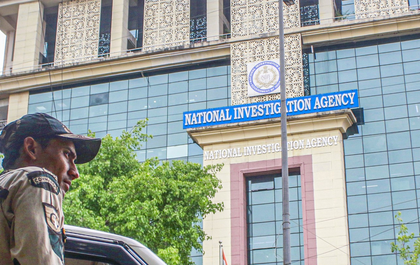NIA special court sentences second accused in 2019 Mumbra fake currency case
By IANS | Updated: July 31, 2025 20:24 IST2025-07-31T20:15:34+5:302025-07-31T20:24:40+5:30
new Delhi, July 31 The National Investigation Agency (NIA) Special Court in Mumbai on Thursday sentenced a second ...

NIA special court sentences second accused in 2019 Mumbra fake currency case
new Delhi, July 31 The National Investigation Agency (NIA) Special Court in Mumbai on Thursday sentenced a second accused to rigorous imprisonment in the 2019 Mumbra fake currency case.
The case pertains to the circulation of high-quality Fake Indian Currency Notes (FICNs) in Maharashtra.
The convict, identified as Jasim alias Wasim Salim Shaikh, was awarded five years, seven months, and ten days of rigorous imprisonment along with a fine of Rs 10,000.
He had been arrested following the recovery of FICNs with a face value of Rs 82,000, all in Rs 500 denominations. Jasim pleaded guilty to the charges during the trial. Jasim is the second person to be convicted in the case. Earlier in May this year, the first accused, Ishak Khan, was sentenced to five years' rigorous imprisonment and fined Rs 10,000.
The trial of the third accused, Radhakrishna Addappa, is currently ongoing. The case began in 2019 when Mumbra police, acting on intelligence inputs from the NIA, conducted a search and arrested Jasim.
Investigations revealed that Jasim had received the fake currency from Addappa outside a KSRTC Bus Stand in Gauribidnur, Chikkaballapura district of Karnataka.
Both were charge sheeted by the Mumbra Police in August 2019. The NIA later took over the case and traced the involvement of Ishak Khan, who was then in Kolkata Jail in connection with another crime.
He was allegedly the key coordinator behind the delivery of the FICNs to Jasim.
The agency uncovered significant documentary and digital evidence during the probe, leading to a supplementary chargesheet in January 2020 against all three accused.
The convictions mark another step in NIA’s ongoing efforts to curb the circulation of counterfeit currency, which is often linked to larger terror financing networks.
Disclaimer: This post has been auto-published from an agency feed without any modifications to the text and has not been reviewed by an editor
Open in app